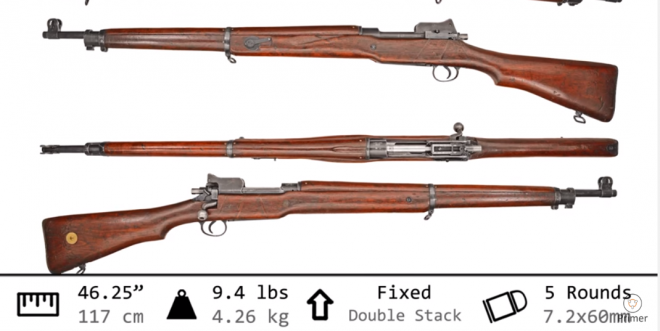
Post Dunkirk and with the great loss of arms that the British forces endured in 1940 the No3Mk1 stock suddenly became a valued resource. The modification consisted of armourers at the Weedon Royal Ordnance Depot or various other commercial companies inspecting the rifles, removing the volley sights and performing any necessary repair prior to issue. Prior to and during World War II, the Pattern 1914 Enfield was used, after undergoing modification ("Weedon Repair Standard", formally the Mk2 standard) in Britain mainly as a rearguard rifle. In 1926 the Pattern 1914 Enfield was re-designated by the British military as the No3Mk1. 30-06 Springfield cartridge and enjoyed some success as a complement for the Springfield M1903 rifles which were America's official standard issue, soon far surpassing the Springfield in total production and breadth of issue.

Sometimes called the M1917 Enfield, it was chambered for the standard US.


Ordnance Department and went into production at the same factories as had produced the P14, production of that rifle having ceased, as the Model of 1917. entered World War I, the P14 was modified and standardized by the U.S. Eventually Winchester manufactured 235,293 rifles, Remington manufactured 400,000 and Eddystone manufactured 600,000, totaling 1,235,293 rifles. The P14's principal combat use during World War I was as a sniper rifle, since it was found to be more accurate than the Short Magazine Lee–Enfield, either in standard issue form or with modified "fine-adjustment" aperture rearsights designated Pattern 1914 Mk I W (F) and Pattern 1914 Mk I* W (F) or, from April 1918, Aldis Pattern 1918 telescopic sights designated Pattern 1914 Mk I* W (T) (modified and telescopic sights were mainly used on Winchester-manufactured rifles, the Winchesters being thought to be of superior quality). The Mk I were soon confined to training usage and marked DP, meaning Drill Purpose. They were still designed by the letter of their manufacturer (W, R or E), even if the production had become more standardized. In December 1916, a modification was made to enlarge the bolt lugs and the rifle became the Mark I*. Problems were encountered with specifications, quality and shortage of machine tools and skilled workers, with the result that the first rifles were not accepted by British inspectors until February 1916. Therefore, the official designation of the rifle was dependent upon its manufacturer: e.g., the Pattern 1914 Mk I W is a Mk I of Winchester manufacture, R would be Remington, or E for Eddystone. However, each factory produced slightly differing parts, leading to interchangeability issues. The need for additional small arms combined with a shortage of spare industrial capacity led the British government to contract with United States commercial arms manufacturers, Winchester, Remington and Eddystone (a subsidiary of Remington set up principally to manufacture the P14) to produce the P14 for the British before the US entered the war in 1917. The Short Magazine Lee–Enfield therefore remained the standard British rifle during World War I and beyond. The primary contractor ( Vickers) was unable to produce more than a handful of rifles, so the P14 became a de facto afterthought.


 0 kommentar(er)
0 kommentar(er)
